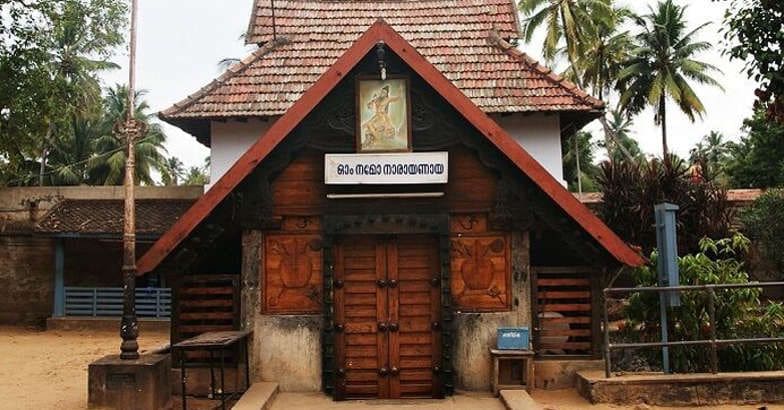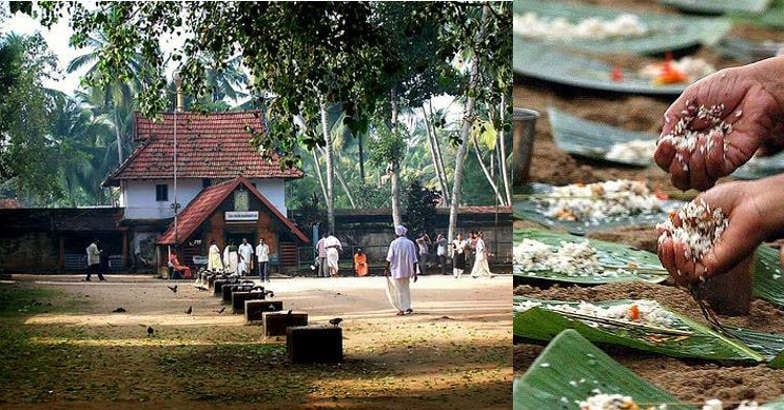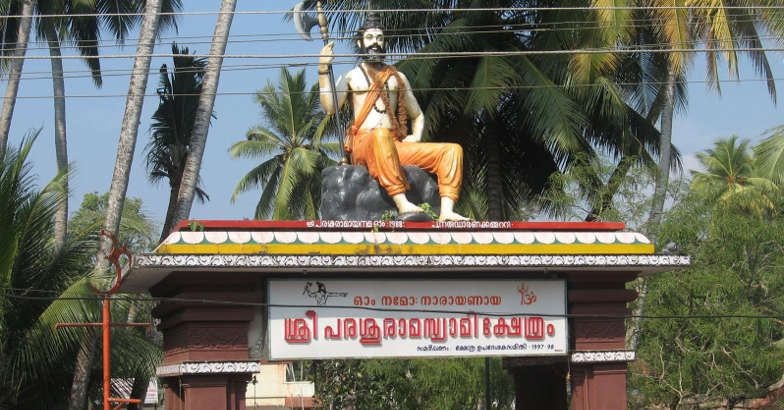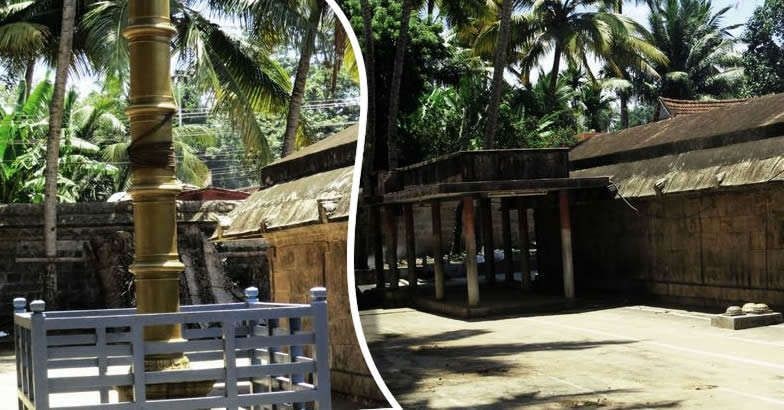Thiruvallam Parasurama temple bestows peace on the living and the dead

Mail This Article
A visit to the Sree Parasurama Swami Temple at Thiruvallam in Thiruvananthapuram should be on the itinerary of every spiritual seeker. Piety draws people to this 2,000-year-old temple set on an exquisitely beautiful piece of land near the confluence of three rivers, the Karamana, Killi and Parvathyputhanar.
The temple is also steeped in folklore and history. Located about 7 km from Thiruvananthapuram city on the Kazhakkuttam-Kovalam bypass, this is the only temple in Kerala dedicated to the warrior sage Lord Parasurama, the creator of the land corresponding to Kerala as per the Puranas.
Folklore says Kerala owes its genesis to Parasurama's mighty axe, which was gifted to him by Lord Shiva who was pleased by the young Brahmin’s long years of meditation and penance. The word "Parasu" means "axe". Parasurama, the sixth and most violent avatar of Lord Vishnu, hurled his axe into the sea off Kanyakumari and brought forth the stretch of land that’s Kerala.
Distraught at having had to kill his mother on his father’s orders, Parasurama is believed to have prayed fervently to the Lord Shiva who advised him to proceed to the banks of Karamana and offer balitharpan (homage to the departed soul), which he did. This is how Thiruvallam became hallowed ground for offering balitharpan. Adi Sankara, the great Hindu philosopher of the 8th century, is also said to have worshipped at the temple and offered balitharpan for his mother.
It’s believed that the temple was built by Vilwamangalam Swamy, an ardent devotee of Mahavishnu. During the course of his pilgrimage, the Swamy chanced to come to this serene spot where he felt the unmistakable presence of Parasurama, following which, he built the temple and installed him as the deity. The present temple was built around the 12th-13th centuries by the legendary Chera king Athiyaman Perumal.
The ancient temple, which is now protected by the Archaeological Department, is run by the Travancore Devaswom Board. Right on top of the main entrance to the temple stands an image of Parasurama holding his axe. Step in and you see the temple pond. The Devaswom office is right in front of the pond. Receipts for balitharpan and other rituals can be had from here. The temple, built completely in black granite, is a picture of superb craftsmanship. So are the sculptures here.

The sanctum sanctorum bears the idol of Parasurama with his axe. Thiruvallam is one of the few temples where the Trinity (trimurtis) of the Hindu religion – Lord Vishnu, Lord Siva and Lord Brahma -- are enshrined. Other deities like Ganapathy, Sree Murugan, Bhadrakali (Mahishasuramardini), Krishna, Vyasamuni, Matsyamurthy (the fish incarnation of Vishnu) and Nagas are also installed here.
Rituals are conducted as per the instructions of the poojari (priest).The main offerings to the idols at the temple are abhishekhams (showerings) like pushpabhishekam (showering of flowers), kumkumabhishekham and bhasmabhishekham.
Ganapathi homam, a ritual dedicated to Lord Ganesha, is also another important offering.
The balitharpan is offered on long sacrificial stones (bali mandapams) lined up on either side of the entrance pathway. There are nine such stones here. More than a 100 people can carry out the ritual simultaneously.
Homage to departed souls
According to the Hindu faith, it’s only through balitharpan that the dead attain moksha (liberation of the soul). Balitharpan is a ritualistic act of purification whereby the dead are freed of their earthly shackles and their souls are set free. The Thiruvallam temple offers devotees the chance to perform balitharpan every day.

The place is never quiet as a sea of devotees come here daily. It is believed that if the balitharpan is done in the presence of Parasurama, the souls will definitely be freed of their wordly sins.
Karkidaka Vavu is the most solemn day when devotees swarm the place in the hope of freeing their beloved dead from the bondage of this world. Special prayers are offered and people return comforted in the belief that their dear ones are now in total unison with the Maker.
During the balitharpan, the devotee wears a ring made of darbha (halfa grass) on the ring finger. Sacred items like sesame seeds, flowers, darbha, sandalwood and raw rice are placed on a plantain leaf. They are then taken out and left on the sacrificial stones. Articles needed for the rituals are available at the bali mandapams.
Devotees believe that the dead take the form of crows and clean the leaves of all the food. The emptied leaves are taken to the bathing ghats and floated down the river. After taking a dip in the river to purify their bodies, the devotees return to the temple.

Devotees can also ask for a thilahoma, a ritual solely for ancestors who died unnaturally, and then have a darshan of the Lord.
Notable features
The Thrivallam shrine is the only Parasurama temple in Kerala
Three separate shrines exist near the main deity for the Trimurtis
The main deity of Lord Parasurama faces north facing the shrine of Sree Padmanabhaswami in Thiruvananthapuram. (Thiruvallam has a strong link with Sree Padmanabhswami. "Vallam" means “head” and therefore, Thiruvallam is regarded as the head of Padmanabhaswami. Likewise, nearby temples Ananthankaadu and Thrippapur are considered as the body and the feet respectively)
Lord Siva, who sits facing the east, is also worshipped. He is not a sub-deity, but enjoys the same stature as Lord Parasurama. There are separate kodimarams (flagposts) and separate rituals for both the deities.
The temple is located at a thriveni sangamam, meaning the confluence of three rivers – the Karamana, Killi and Parvathiputhanar. (The Hindus regard such a confluence as a sacred place and also as the ideal spot to pay homage to departed family members and ancestors.)

Special days at the temple
Parasurama Jayanti: The birth anniversary of Lord Parasurama is an auspicious occasion and an important day.
Thiruvonam Arattu: The annual temple festival falls in the month of Thulam (October-November). The 20-day festival begins with the temple flag being hoisted on the day of the star Hastham. It ends with aarattu (Holy Bath) on the day of the star Thiruvonam. The aarattu ceremony is performed in the Karamana river.
Karkadaka Vavu Bali: This is the most important ritual at the temple. The balitharpan is on the eve of the new moon day of Karkidaka (July-August). Thousands of devotees converge at the temple on this day to pay homage to the dead.

